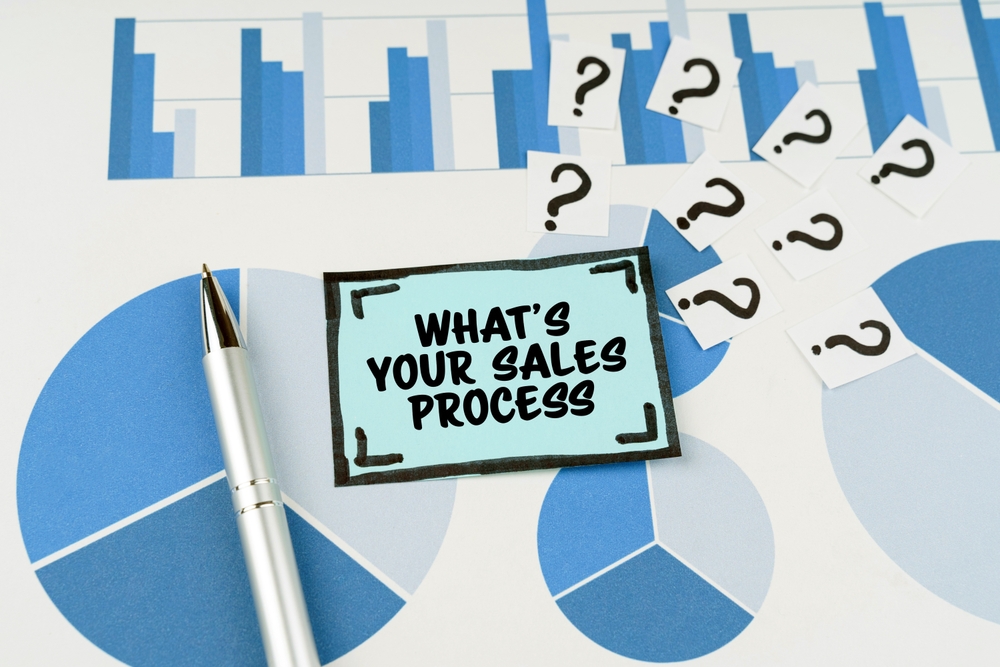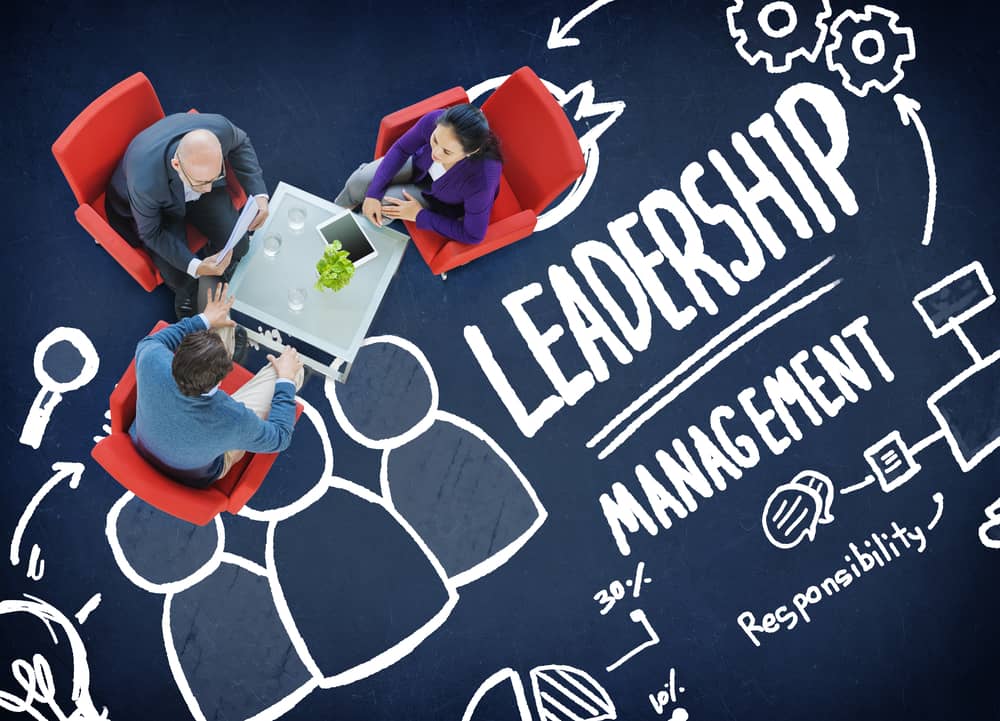Our firm began practicing fractional sales management in early 2006, and nearly 20 years later,…

Defining a Clear and Useful Sales Process
This article is an excerpt from our book, Part-Time Sales Management, For Small Business Sales Teams. Defining your sales process is one of four elements we suggest establishing to communicate clear expectations to your sales team.
By documenting and clarifying your expectations, you are setting yourself up to more easily manage and attract additional salespeople that will be able to understand and follow your process.
In addition, it’s impossible to have an environment of accountability if expectations are not clear and agreed to. The four elements include the company vision or plan, job descriptions, your sales process, and individual sales plans.
Excerpt from Part-Time Sales Management, Chapter 4, Expectations
Sales Process
The concept of the “sales process” underpins every aspect of selling. Whether you are already familiar with this concept or not, you need to know how to adapt it to your business, so you can effectively manage your sales team.
When you invest in clearly defining your sales process, you will be adding clear expectations, accountability points, and meaning to a sales pipeline or sales funnel report that is produced by your Customer Relationship Management system (CRM).
If you are unfamiliar with a sales funnel or pipeline report, it is simply a list of all your potential opportunities organized by the sales stage. Sales CRMs usually offer this information as a core report. Without this level of detail on the sales process stages, each salesperson will decide—in his or her own mind—which activities are best to pursue.
Usually, they will not share their thoughts with you. This lack of communication will leave you, the manager, guessing or wondering what they are doing. It becomes impossible to create and sustain a culture of accountability in a company with ambiguous guidelines, which will eat into your time management.
Lack of details can also lead to poor forecasting as the probability of each sale closing is left up to subjective judgment rather than agreed-upon objective milestones defined in a sales process. Your defined sales process helps your salespeople work smarter and more efficiently and allows you to manage something measurable.
What is a Sales Process?
A sales process is a list of logical stages, activities, and outcomes that provides milestones along every point in the sales conversation—moving from the first step of selectively contacting clients through the last steps of completing the sale and doing follow-up work.
One way to view the generic idea of the sales process is to think of it as a road map that takes you from the prospective customer’s earliest glimmer of interest to their final decision to buy or not.
The point I want you to remember is that you do not need to find some magical formula or unproven gimmick to produce sales. Rather, like other aspects of your business, sales results are best achieved when you develop and document a logical, rational process that you can repeatedly use with your team. This process will become part of your accountable environment to help ensure salespeople are doing the things that provide the best opportunity for success.
What are the Basic Stages in a Sales Process?
This question can be answered in various ways because some experts may break down the sales process into a dozen stages, while others may list only five. Regardless of where the lines are drawn between each stage, however, the sales process roadmap generally follows a simple path that takes you from the starting point of initial customer outreach to the finish line of a completed sale.
Below are the common stages of most sales processes, which I’ll use in Figure 4.8 Sample Sales Process Guide. This model is one you can adapt or customize to fit the needs of your own company.
The preliminary marketing stage below is technically not part of a sales process. Marketing (generating leads) is often part of a salesperson’s duties at a small business, so I’m including it as a preliminary stage. Marketing is focused on attracting interest from companies you suspect might want to buy from you. The sales process begins when a suspected company engages
in conversation to make a buying decision. Marketing is about attracting interest, and sales are about converting interest into a purchase.
Preliminary Marketing Stage for Sales People:
Generate Leads
Sales Process Stages:
Stage 1 – Qualify Leads
Stage 2 – Manage Discovery Appointments
Stage 3 – Lead Solution Discussions
Stage 4 – Develop and Present a Sales Proposal
Stage 5 – Initiate Sales Order
Stage 6 – Follow-up with Customer Service/Referrals
The Sales Process Stage Sections Definitions table (Figure 4.7) is designed to provide definitions of five sections to consider including when developing your sales process stages. In addition to your stage name, include a stage purpose, activity to perform, resources to use, and what to update in the CRM. By including the additional details, you are lining up your expectations to be accountable. As you customize your sales process, you might wonder how detailed you should get.
The answer varies and depends on how complex your product or service is and how seasoned your team is. If you intend to hire more salespeople, more detail will provide greater chances of success for your new sales employees. That said, be careful not to overburden the team with more details than necessary.
Adding definition to your sales process adds clarity and mutual understanding. It’s a little chore to define, but once it’s done, you return to selling. In addition, including what needs to be input into your CRM will improve the accuracy of the sales process dashboards and reports.
Figure 4.7
Sales Process Stage Sections Definitions
| Sales Process Stage Sections Definitions | |
| Stage Name | Short label for the stage
EX: Qualify Leads; Initiate Sales Order, etc. |
| Purpose | Desired outcome for this stage (not activities)
EX: Clearly understand buying motives & technical requirements to prepare a quality proposal |
| Activity | Two types of activities:
|
| Forms & Resources | Resources: Marketing materials, discovery questions, testimonials, etc.
Forms: Any forms required to prepare a solution and/or proposal |
| CRM Fields | Any fields that should be updated during this stage if you are using a CRM database |
Figure 4.8
Sample Sales Process Guide
| Lead Generation Activities | |
| Stage Name | Preliminary Marketing Stage – Generate Leads |
| Purpose | Identify leads that have expressed an interest to learn more |
| Activity | – Work a proactive marketing system that leads to referrals
– Market, through providing education and sharing insights to prospects outside your referral network – Conduct reconnaissance phone calling/digital outreach – Build your contact and referral network |
| Forms/Resources | – Book – No More Cold Calling
– Email drip marketing system – Company webinars |
| CRM Fields | – Add notes
– Input all buyers as contacts into CRM – Add to any marketing lists Convert lead to opportunity if they express interest |
| Sales Process Stages | |
| Stage Name | Stage 1 – Qualify Leads |
| Purpose | Qualify that an opportunity exists to pursue the lead, and if it does, to make an initial appointment |
| Activity | – Conduct preliminary research
– Make introductions if not already made – Contact lead and ask qualifying questions – Set appointments for qualified leads |
| Forms/Resources | – Lead qualifying questions in CRM
– Intro video on web site |
| CRM Fields | – Update stage
– Add notes – Input all buyers as contacts into CRM – Add to any marketing lists Initiate proposal module |
| Stage Name | Stage 2 – Manage Discovery Appointments |
| Purpose | Identify all buyers, buying motives, goals, objectives, and issues to prepare a solution |
| Activity | – Meet with all necessary buyers involved in decision
– Send confirmation emails after all meetings—including a Letter of Understanding (See Appendix C. for a sample of a Letter of Understanding) – Conduct site visit – Have all buyers see intro video – Conduct as many meetings as needed to meet purpose – Bring in engineers and support roles as needed to support sales – Confirm buyer’s vision for how it will be when problem is solved |
| Forms/Resources | – Discovery Questionnaire
– System infrastructure map |
| CRM Fields | – Update stage
– Add notes – Input all buyers as contacts into CRM – Add to any marketing lists Initiate proposal module |
| Stage Name | Stage 3 – Lead Solution Discussions |
| Purpose | Discuss and collaborate on an agreeable solution to present in a formal proposal |
| Activity | – Confirm understandings early and often during meetings and after meetings
– Schedule and conduct solution discussion meetings – Confirm budget – Test applications if needed – Present demonstrations if needed – Do surveys if necessary – Arrange vendor visits if needed |
| Forms/Resources | – Customer sign off on solution agreement |
| CRM Fields | – Update stage
– Add notes – Add to any marketing lists – Complete proposal |
| Stage Name | Stage 4 – Develop and Present Sales Proposal |
| Purpose | Present proposal to all parties as agreed to earlier in order for decision to be made |
| Activity | – Work with internal and external support departments/vendors to prepare proposal and pricing
– Have proposal edited by administrative staff – Go back to Stage 3 if changes are required – Schedule presentation – Conduct presentation |
| Forms/Resources | – Proposal
– Contract – Credit application |
| CRM Fields | – Update stage
– Add notes – Add to any marketing lists |
| Stage Name | Stage 5 – Initiate Sales Order |
| Purpose | Ensure customer service and product delivery/installation teams absolutely understand all customer expectations |
| Activity | – Hold kick off meeting with support departments
– Review all aspects and promises – Introduce customer to support and implementation team – Review any special billing requirements with accounting Ask for referrals if perceived value is identified |
| Forms/Resources | – Order initiation |
| CRM Fields | – Update stage
– Add notes – Add to any marketing lists |
| Stage Name | Stage 6 – Follow-Up with Customer Service/Referrals |
| Purpose | Ensure customer satisfaction and report any issues needing attention |
| Activity | – Meet during installation
– Meet after training – Follow up in 30 days after installation and training complete – Solicit recommendation or testimonial – Ask for referrals if perceived value is identified |
| Forms/Resources | – Customer sign off form |
| CRM Fields | – Update stage
– Add notes – Add to any marketing lists |
If you have an established business that has been successful selling but never defined your process, you do have one. When we begin working with a client, we don’t bring our boilerplate process in, we simply ask what happens during the selling process. Together we determine the best practices and define the sections so each salesperson is working in the best manner to win more business.
If you would like us to help facilitate the definition of your sales process, give us a call. We’d be happy to help.




Comments (0)